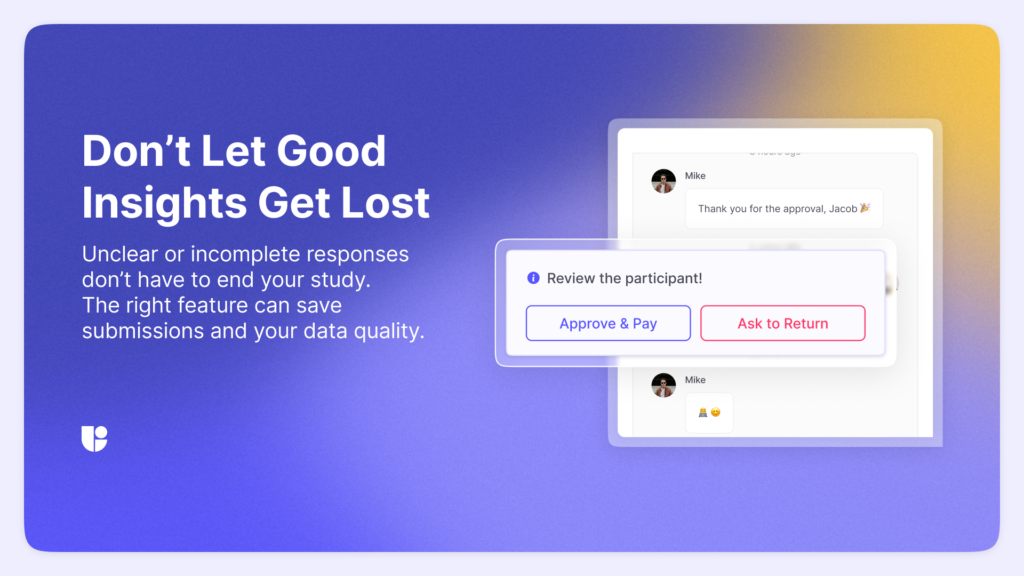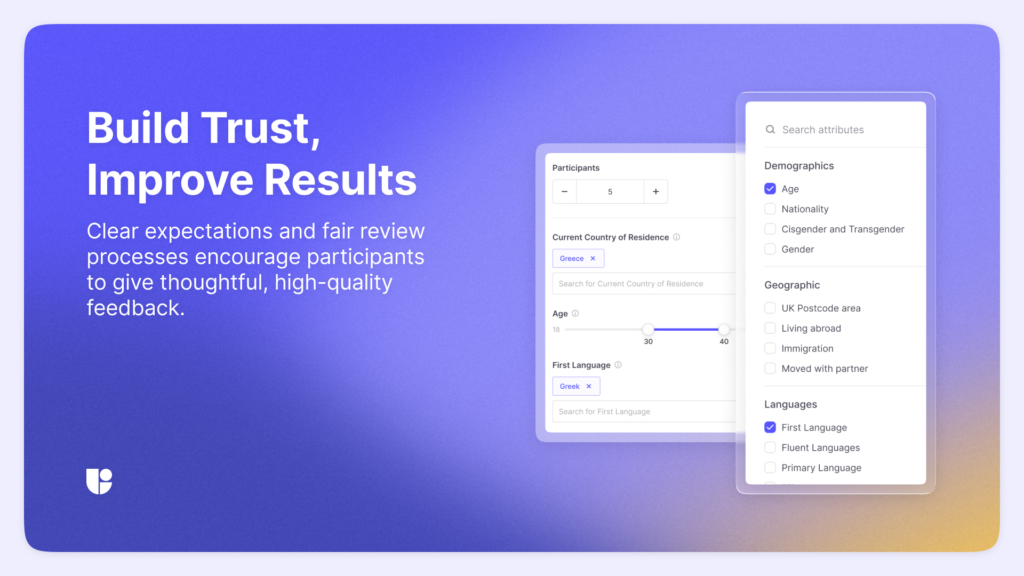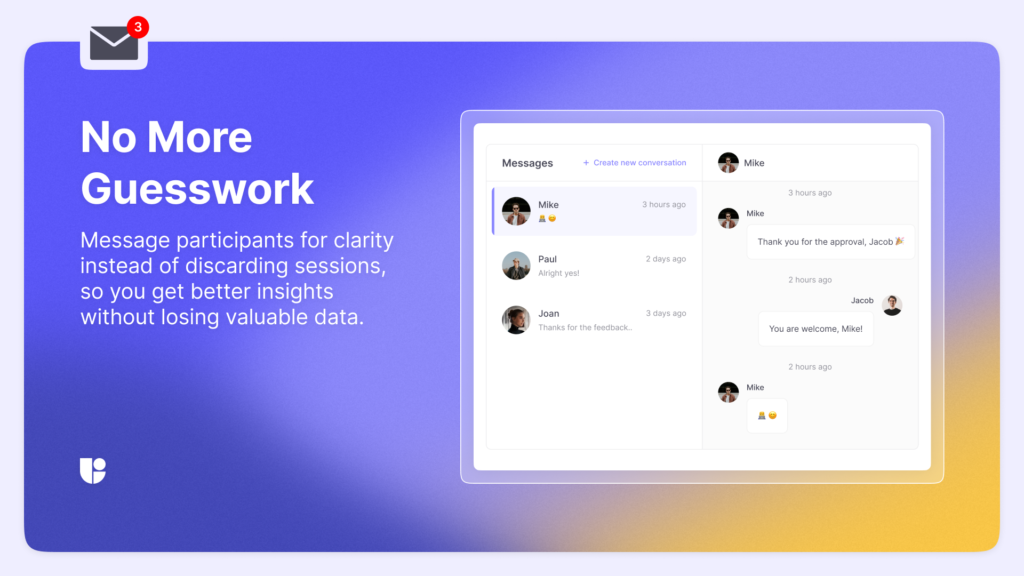Transparency isn’t just a buzzword in user research. It’s one of the cornerstones of meaningful, respectful, and useful research. And when we say transparency, we’re not only talking about what researchers say to stakeholders or what participants are told in a consent form. We’re talking about the full experience of research from what participants understand to what researchers can see, and how both sides interact with the process.
At Useberry, we’ve always believed that researchers should have the power to make confident, fair decisions. That’s why our latest update focuses on giving teams visibility and control over who participates in their studies and how those sessions are handled. Features like Participant Review aren’t just about functionality; they’re about aligning UX research with real-world values like clarity, fairness, and respect.

User Research Isn’t One-Way
Too often, user research is treated as a transaction. A participant completes a task or survey, submits their session, and disappears. But anyone who has spent time in the weeds of session analysis knows that research is rarely that straightforward.
Answers can be confusing, tasks might be misunderstood, and sometimes, submissions just aren’t usable. Without a system in place for communications or transparency, researchers are forced to either silently discard these results or spend time manually trying to clean them up.
It is an inefficient system where you spend hours trying to make sense of unclear data, only to end up spending more time discarding and cleaning up your data. It can lead to frustration for potentially lost insights, and even ethical concerns about how data is handled.
Transparency Builds Trust (On Both Sides)
When you bring transparency into the research process, you’re doing more than improving workflow and efficiency. You are showing both the researchers and the participants that their time is respected and that you’re committed to clear, fair, and ethical practices.

Participants are more likely to give thoughtful, high-quality feedback when they understand what’s expected of them and feel like they’re not just a checkbox on a dashboard.
From the researcher’s perspective, transparency means a load (both mental and workload) off your mind. It means being able to:
- Clearly review each participant’s session
- Decide which submissions meet your study standards
- Follow up directly when something needs clarification
What Transparency Looks Like in Tools
This is where features like Participant Review inside Useberry come into play. It’s not about adding complexity. It’s about giving researchers visibility and control without breaking the flow of their work.

Available when using our Participant Pool powered by Prolific, this feature combines the flexibility of reviewing and managing responses with access to a vetted panel of over 200,000 participants across 38+ countries. You get fast turnaround times (often under 2 hours), over 300 audience filters, and built-in quality checks before your own review process even begins.
Our new participant review update includes features such as:
- Accept or ask to return participant submissions that don’t meet the study criteria
- Message participants directly to clarify unclear responses or say thanks
- Keep all actions visible and tracked within the dashboard, so there’s no guessing what happened or why
That last part is key. When participants know that their sessions are reviewed fairly, and researchers have tools to act transparently, the entire research process becomes more accountable and human.
Don’t think that the participant pool is your only option when it comes to recruitment with Useberry. If you are interested in directly reaching out to users to take your study, you can check our self-recruitment option via the Share Link.
The Payoff: Cleaner Data and Stronger User Research
Yes, transparency is the right thing to do. But it also makes research better. Cleaner sessions. Less confusion. More confidence in your results. When researchers aren’t stuck wondering what to do with messy or incomplete data, they can spend more time actually learning from users.

And when you can message a participant to clarify an answer instead of throwing out their whole session? That’s a win for everyone involved!
Closing Thoughts
Transparency in UX research isn’t easy, especially when you are running a remote unmoderated study. It just requires the right tools that are built with the right intent, and a mindset that respects the people on both sides of the process. Tools like Useberry’s Participant Review make it easier to build transparency into your research flow, but as our senior UX Researcher Harry told me:
The real shift is in how we think about our role as researchers. We’re not just collecting data. We’re building understanding. And transparency is what makes that understanding possible.
Bring Transparency to Every User Study
With Useberry, your participant data stays clean and your research stays ethical.




